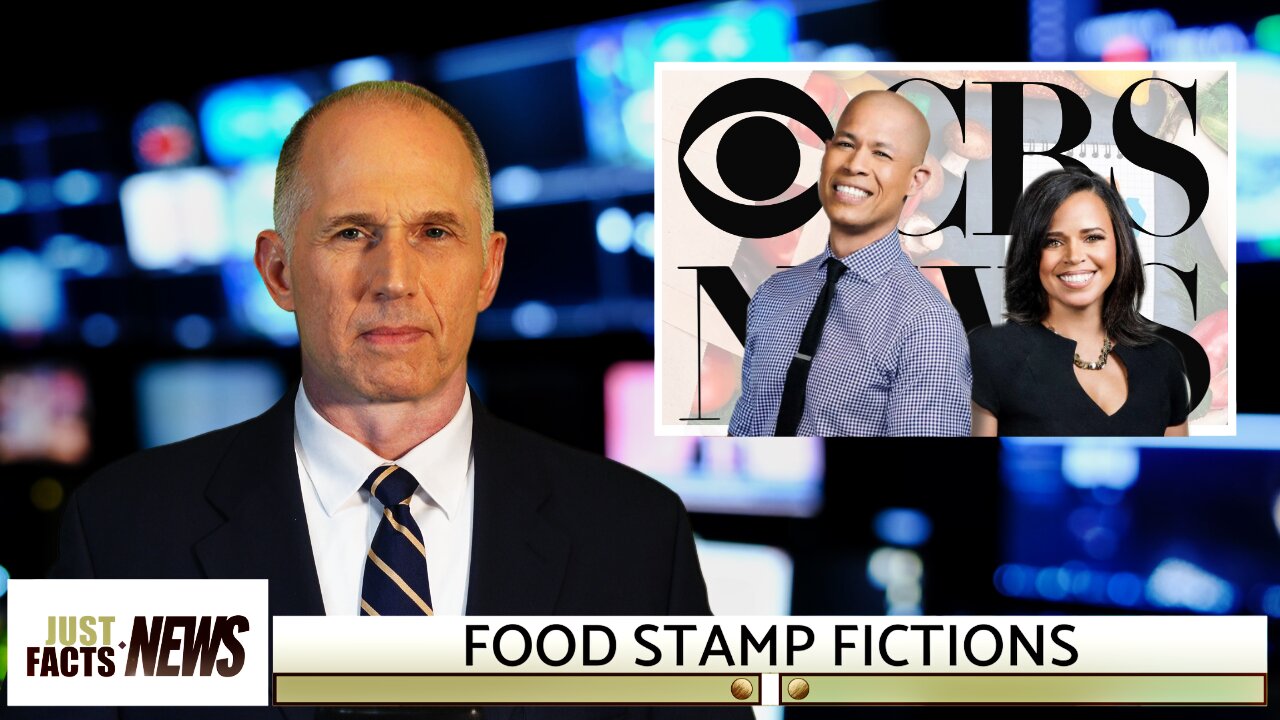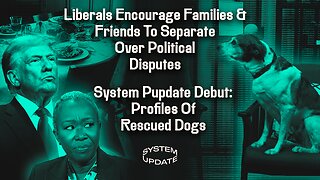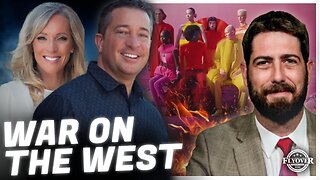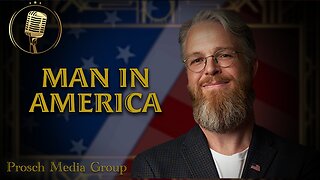Premium Only Content

Food Stamp Fictions
Description:
People who take Food Stamps are 79% more likely to suffer from hunger than people with equivalent incomes who don’t take Food Stamps.
SOURCES:
In a recent episode of CBS News, anchor Anne-Marie Green claimed, “So, you know, people should sort of understand that this, the SNAP benefits, were sort of in place to help during the pandemic, but here’s what happened since then, since then. The price of food has gone through the roof, even when, you know, other prices have sort of stabilized or gone down, it’s still super expensive to buy food, particularly healthy food.” https://www.cbsnews.com/news/food-stamps-snap-benefits-cuts-march-2023/
SNAP benefits (previously called Food Stamps) are automatically indexed every year to the prices of food: https://www.fns.usda.gov/snap/allotment/COLA
SNAP benefits rose by 12.5% at the start of the 2023 federal fiscal year:
• In the 2022 fiscal year, “maximum allotments” for a family of four “will increase” to “$835.” https://www.fns.usda.gov/snap/fy-2022-cost-living-adjustments
• In the 2023 federal fiscal year, “maximum allotments” for a family of four “will increase” to “$939.” https://www.fns.usda.gov/snap/fy-2023-cola
• CALCULATION: ($939 – $835) / $835 = 12.5%
At the start of the 2022 federal fiscal year, the Biden administration raised Food Stamp benefits by 21%, well above the rate of food inflation: https://www.gao.gov/products/gao-23-105450
In the same CBS News episode, anchor Vlad Duthiers claimed, “So, as you are aware, economists have drawn parallels between this policy and reductions in poverty, real reductions.” https://www.cbsnews.com/news/food-stamps-snap-benefits-cuts-march-2023/
The federal government doesn’t include SNAP benefits in its the official federal poverty measure: “The income and poverty estimates shown in this report are based solely on money income before taxes and do not include the value of noncash benefits such as those provided by the Supplemental Nutrition Assistance Program, Medicare, Medicaid, public housing, or employer-provided fringe benefits.” https://www.census.gov/content/dam/Census/library/publications/2020/demo/p60-270.pdf
A USDA measure called “very low food security” roughly corresponds to “food insecure with hunger”: https://www.ers.usda.gov/amber-waves/2007/june/struggling-to-feed-the-family-what-does-it-mean-to-be-food-insecure/
Among households who are poor enough to receive Food Stamps, the rate of hunger is 79% higher for people who take Food Stamps than those who don’t:
• “Table 8. Percentage of households by food security status and participation in selected Federal nutrition assistance programs, 2021 … “With very low food security … Received SNAP benefits [=] 17.0 … Did not receive SNAP benefits [=] 9.5” https://www.ers.usda.gov/webdocs/publications/104656/err-309.pdf
• CALCULATION: (17.0 – 9.5) / 9.5 = 79%
Scholars have attempted to explain why “the prevalence of very low food security among households participating in SNAP was double that of nonparticipating households in the same low-income range” by theorizing that those who take SNAP benefits have “greater difficulty meeting their food needs” than those who don’t take SNAP benefits. https://www.ers.usda.gov/webdocs/publications/79761/err-215.pdf
Scholars assume the theory above must be true because there’s no reason why giving people Food Stamps could increase hunger: “Using a multivariate logit regression framework, for example, Wilde and Nord (2005) estimate a negative impact of food stamp participation on food security even after controlling for unobserved fixed effects. Given no plausible mechanism through which food stamps would diminish food security, they conclude that their estimated coefficient is biased due to unobserved time-varying household characteristics.” https://core.ac.uk/download/pdf/212843728.pdf
“Moral hazard” is “the risk that an individual or organization will behave recklessly or immorally when protected from the consequences.” https://www.thefreedictionary.com/Moral+Hazard
CBS News footage is reproduced under the fair use provision of U.S. copyright law for “purposes such as criticism” and “comment” (17 U.S.C. §107). https://www.law.cornell.edu/uscode/text/17/107
-
 2:17
2:17
Just Facts
2 months agoJD Vance Said That “Psychos” are a “Fact of Life” — Not “School Shootings”
402 -
 11:54
11:54
Professor Nez
4 hours ago🚨CHILLING REVELATION: Tucker Carlson Reveals Dems NEXT PLAN to STOP Trump!
38.5K25 -
 6:51
6:51
Colion Noir
4 hours agoI have Something To Say To Gun Owners
22.7K16 -
 1:18:24
1:18:24
Glenn Greenwald
8 hours agoLiberals Encourage Family & Friends To Separate Over Political Disputes; Segment Debut Of System Pupdate: Profiles Of Rescued Dogs | SYSTEM UPDATE #373
83.5K138 -
 1:24:53
1:24:53
Flyover Conservatives
23 hours agoMarketing Madness or Manipulation? The War on Western Identity - Alex Newman; Economic Update - Dr. Kirk Elliott | FOC Show
25.2K3 -
 1:15:05
1:15:05
PMG
23 hours ago $3.75 earned"Big Pharma EXPOSED: The HIDDEN Cures They Tried to Bury"
21.7K4 -

Tundra Gaming Live
5 hours ago $1.43 earnedThe Worlds Okayest War Thunder Stream
21.5K1 -
 1:49:52
1:49:52
VOPUSARADIO
12 hours agoPOLITI-SHOCK! Back To Back Guests: Rebekah Koffler & Dr. Michael Schwartz
17.2K -
 59:44
59:44
The StoneZONE with Roger Stone
5 hours agoWill the Perps of the Russian Collusion Hoax Face Justice? | The StoneZONE w/ Roger Stone
26.2K9 -
 2:25:06
2:25:06
WeAreChange
7 hours agoCOMPLETE COLLAPSE: Media Spiraling Into OBLIVION As It Tries To Take Out Elon and Trump
70.4K12